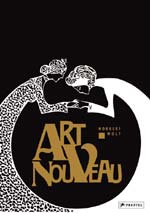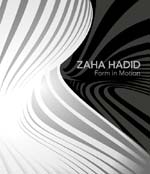
|

|
|
Home Site Search Contact Us Subscribe
|
|
|
Book Review: Advancing Windswept Design: Pointers from Art Nouveau, Zaha Hadid, and Charles Sowers New books and installation art highlight breezy refinements in wind-inspired design. By Norman Weinstein April 5, 2012 Harnessing wind energy harks back centuries to unknown Middle Eastern and Asian architects who developed windcatchers to create natural ventilation systems – but the architectural implications of harnessing wind go far beyond ancient windcatchers and today’s turbine-turning wind farms generating energy. Wind itself shapes environments with architectural force and focus, generating wave patterns refashioning shorelines, and through wind-borne deposition, shape dunes. These are natural and artistic, as well as environmental events. Perhaps that is why artists and architects, not wanting to be outdone by Nature, have throughout history been refining their own forms of windswept art.
Windswept landscapes and interiors dramatically animate the Renaissance religious paintings of Tintoretto. Bernini’s baroque sculptures – think of his Triton with streaming hair gracing Rome’s “Fountain of the Moor” – evoke divinely human figures so wind-whirled as to prefigure Dorothy and Toto’s tornado-transit to Oz. Referencing Asian art, windswept seas have long sensationally energized Chinese and Japanese landscape art, most famously in Hokusai’s cresting wave print. So, windswept design has a long history of sweeping away designers seeking a sense of dramatically kinetic dynamism. And recent books and instillation art inspire and deepen the inspirational value of windswept design for art’s sake as well as for sustainability’s sake.
Norbert Wolf’s Art Nouveau (Prestel, 2011) is a weighty and eccentrically organized coffee table book with extraordinary reproductions of Art Nouveau architecture, painting, decorative arts, fashion, advertising, and most surprisingly, dance. Wolf overreaches by trying to pack too many artistic expressions in a single volume, likely contributing to the book’s odd sequencing of topics, hop-scotching from key themes to cataloguing artists by nationality, to painting, and concluding with a visionary chapter about the impact of this late 19th-century style in our time. From an architectural perspective, you might read this starting with the chapter on “Synesthesia” featuring a section entitled “Built Symphonies,” then jump to chapters on Victor Horta, Gaudí, Louis Sullivan, and Adolph Loos. And if Wolf’s rather formal writing (translated from the German) is offputting, the book’s graphics alone captivate. Art Nouveau architecture stunningly showcased curvilinear and biomorphic decorative patterns, foreshadowing major trends in 21st-century century design. It embraced new materials and technologies in the service of spotlighting the artful in nature (twining plants, rippling streams, and massively, windswept flora and fauna). Art Nouveau’s obsession with the windswept image manifested itself architecturally in Victor Horta’s swirling staircases suggesting barely arrested eddies in a stream, or a freeze-frame of a wind funnel, an uncannily balanced marriage of natural form and geometric abstraction realized in lushly curvilinear lines.
This is why you can discover wicked assessments of Zaha Hadid’s designs on the Internet by searching “Hadid Art Nouveau Chic.” While clearly crediting the Russian Constructivists as muses in the evolution of her precise, mathematically-inspired, dynamically kinetic designs, her fluid forms evoking energetically pooling motion might just as well be updated translations of Art Nouveau. Try this experiment. Transition from gazing at the Art Nouveau art and architecture inspired by the dancer Loie Fuller (page 95 in Wolf’s book or here) to this 1896 film of Fuller dancing. Now look at the design of Hadid’s Abu Dhabi Performing Arts Center. Is it possible to not see the continuity and refinement of windswept biomorphic forms from Art Nouveau to Hadid? Fuller’s dance mimics a butterfly navigating wind currents, or leaves twisting in wind, but also verges on purely abstract geometric patterns evoking vigorously muscular gestures. In short: Hadid animated on the dance floor, truer to her aesthetic than her stage set design for that avant-Brit dance band, The Pet Shop Boys. Zaha Hadid: Form in Motion (Yale University Press, 2011) is a petite catalogue accompanying the recent show of Hadid’s furniture and objects at the Philadelphia Museum of Art. Authored capably by curator Kathryn Bloom Hiesinger (and only mildly blemished by the Teutonically-tortured prose of key Hadid colleague, Patrik Schumacher), 42 color illustrations of sofas, tables, residential fixtures, jewelry, and footwear positively beguile. Common to the diverse lot: the windswept biomorphic look. How comfortable is Hadid’s furniture? Oh, probably as easy to sit upon as any asymmetric plastic kidney-shaped chairs by Mr. and Mrs. Eames, and better than dropping your ass into Rietvald’s Red/Blue chair of de Stijl-de Sade glory. But since Hadid designs interiors and exteriors predicated on our desire for adventurous turbulent atmospherics, creature comfort assumes second place to excitement. Who relaxes into a sofa in the midst of a tornado?
Bay Area instillation artist Charles Sowers has carried the aesthetic of windswept design into another remarkable branching. Watch his “Windswept” installation here. Sowers has refashioned the façade of San Francisco’s Randall Museum into a windswept display of 612 directional arrows rotating to graphically indicate the relationship between wind and building. On one level, he has transformed the museum’s façade to a lighthearted riot of miniature weather-vanes to perhaps lift the veil of exterior seriousness emanating from much museum architecture. On yet another level, he has brilliantly transformed a building façade into a nature observatory, as sensitive an indicator of wind patterns as desert dunes or shorelines. At a time when building façades assume the identity of energy-draining, larger-than-life video monitors studded with billboard vulgarity, there’s something aesthetically and sustainably uplifting in Sowers’s windswept, low-tech, permanent instillation. This may not have been what Bob Dylan had in mind when he sang “You don’t need a weatherman to know which way the wind blows,” but it seems to mesh with poet Ezra Pound’s poetic claim, “The wind is part of the process.”
Norman Weinstein writes about architecture and design for Architectural Record, and is the author of “Words That Build” – an exclusive 21-part series published by ArchNewsNow.com – that focuses on the overlooked foundations of architecture: oral and written communication. He consults with architects and engineers interested in communicating more profitably; his webinars are available from ExecSense. He can be reached at nweinstein@q.com.
More by Weinstein:
A Meditation on the Beauty of Zaha Hadid's Door Handle Hadid's design issues a challenge: define beauty by lyrically playing with illusion.
Why
"Greatest Hits" Lists by Architecture's Stars Should Be Mocked
Celebratory Meditations on SANAA Winning the Pritzker Prize
Op-Ed: Life After Ada: Reassessing the Utility of
Architectural Criticism
Book Review:
Laboratory Architecture for Observing Nature at Play
Book Review: Tracing
a Hidden Track from Adolf Loos as Modernist Architect to Jennifer Post as
Modernist Interior Designer
Two Books to Accelerate
the Translation of Ideas into Practical Forms
Book Review: How to
be a Useful Architectural Critic: Alexandra Lange's Perspicacious Primer Points
the Way
Michael Sorkin:
Architectural Critic as Scam Scanner and Urban(e) Design Sage
Best Architecture
Books of 2011
Book
Review: Pencils that Refuse to Die: Meditations about New Books on
Architectural Drawing
Book
Review: "One Million Acres & No Zoning": Lars Lerup's Outrageous
Encomium to Houston Instructs and Infuriates
Book
Review: Talkin' 'Bout (Not) My Generation: Uplifting Gen X Architects Showcase
Pragmatic Optimism
"Frank
Lloyd Wright's Guggenheim Museum": Bravura Example of an Architectural
Documentary - Wright's Guggenheim Done Right
Book
Review: Diving into Architecture from Every New Angle: Reading Guillevic's
"Geometries"
Book
Review: "Immaterial World: Transparency in Architecture": Marc
Kristal crystallizes increasingly complex notions of transparency with a light
touch.
Book
Review: "Visual Planning and the Picuresque" by Nikolaus Pevsner.
Edited by Mathew Aitchison
Book
Review: How New Urbanism's Case Triumphs Best Through "The Language of
Towns & Cities: A Visual Dictionary" by Dhiru A. Thadani
Best
Architecture Books of 2010
Book Review:
"Architecture and Beauty: Conversations with Architects about a Troubled
Relationship": Yael Reisner exuberantly interviews architects about beauty
Book
Review: Shedding Light on Concrete: Tadao Ando: Complete Works 1975-2010 by
Philip Jodidio
Book
Review: Sage Architectural Reflections from Architecture's "Athena":
Denise Scott Brown's "Having Words" distills a lifetime of theorizing
and practice into practical and succinct guidance for thriving through
difficult times
Book
Review: Keeping the Architectural Profession Professional: "Architecture
from the Outside In: Selected Essays by Robert Gutman" celebrates Gutman's
legacy as invaluable outsider
Book
Review: "Design through Dialogue: A Guide for Clients and
Architects," by Karen A. Franck and Teresa von Sommaruga Howard
Twilight Visions: Vintage Surrealist Photography Sheds
New Light on Architecture
Best
Architecture Books of 2009
Book Review: "Gunnar Birkerts: Metaphoric Modernist" by Sven Birkerts and Martin Schwartz A major architect in the history of Modernism finally receives recognition – and sundry asides about why Modernism never exited.
Book Review:
"Urban Design for an Urban Century: Placemaking for People," by Lance
Jay Brown, David Dixon, and Oliver Gillham
Book Review:
"Everything Must Move: 15 Years at Rice School of Architecture
1994-2009"
Book Review: A Subversive Book Every Architect Needs:
"Architect's Essentials of Negotiation" by Ava J. Abramowitz
Book Review: A Perspective from One Elevation: "Conversations With Frank Gehry" by Barbara Isenberg Gehry's conversations offer portraits of an astute listener as well as talker, an architect as aware of his flaws and limitations as of his virtues.
Best Architecture Books of 2008
Book Review: You've Got to Draw the Line Somewhere A review of Drafting Culture: a Social History of Architectural Graphic Standards by George Barnett Johnston
Book Review: "NeoHooDoo: Art for a Forgotten Faith," edited by Franklin Sirmans Sharpen your pencils - and get ready to do a NeoHooDoo shimmy.
|
(click on pictures to enlarge) 

|
© 2012 ArchNewsNow.com